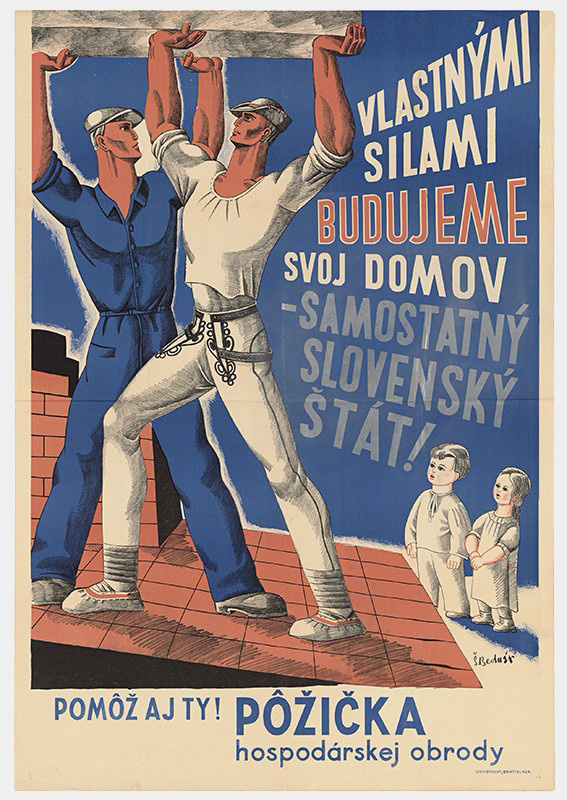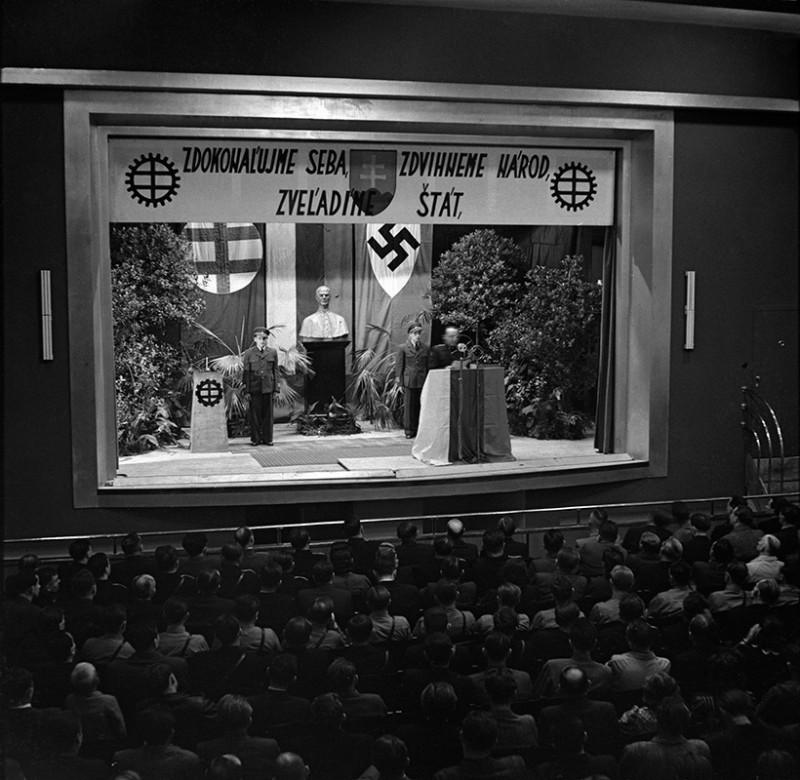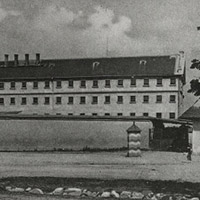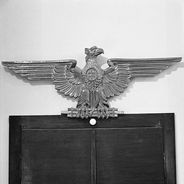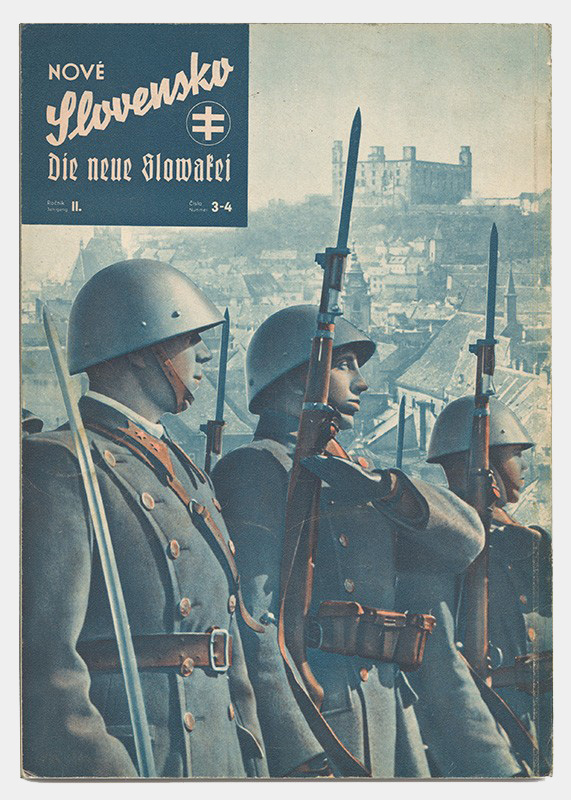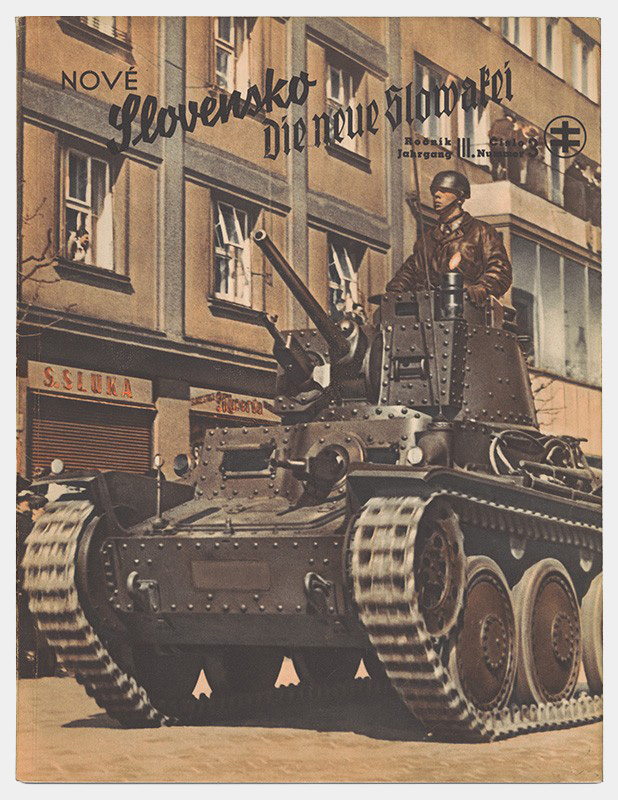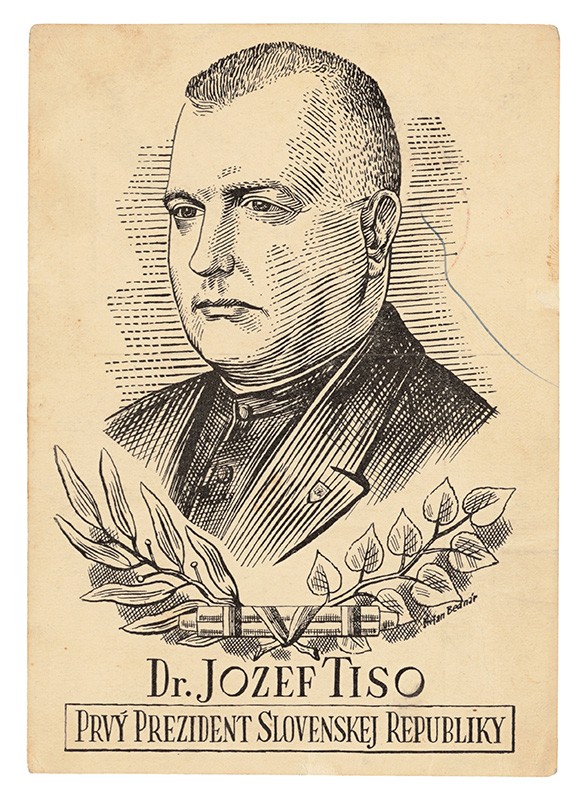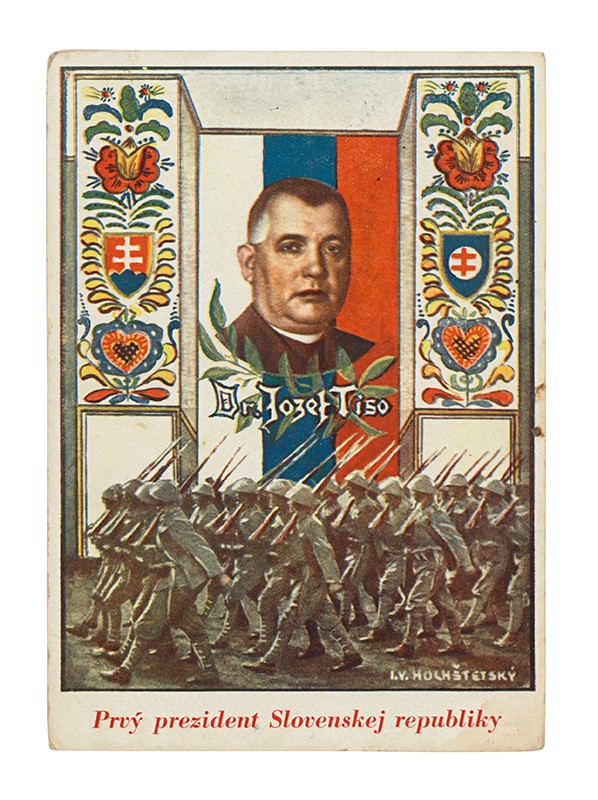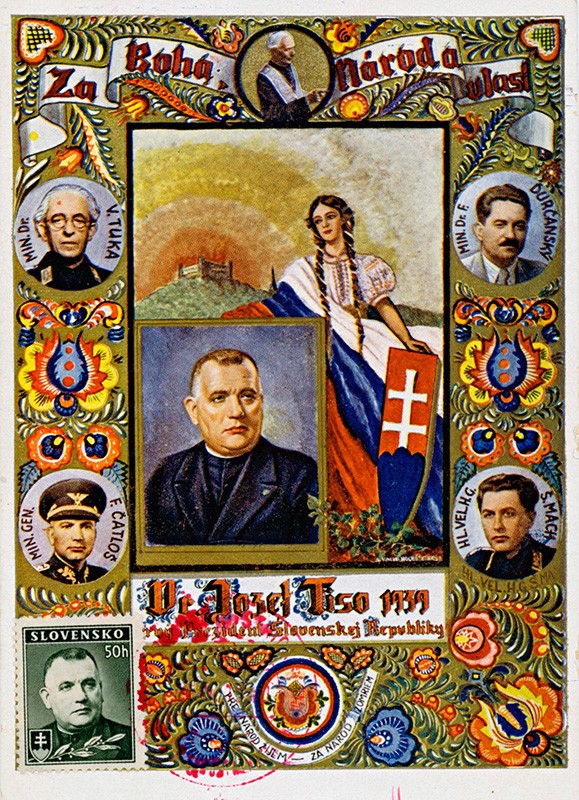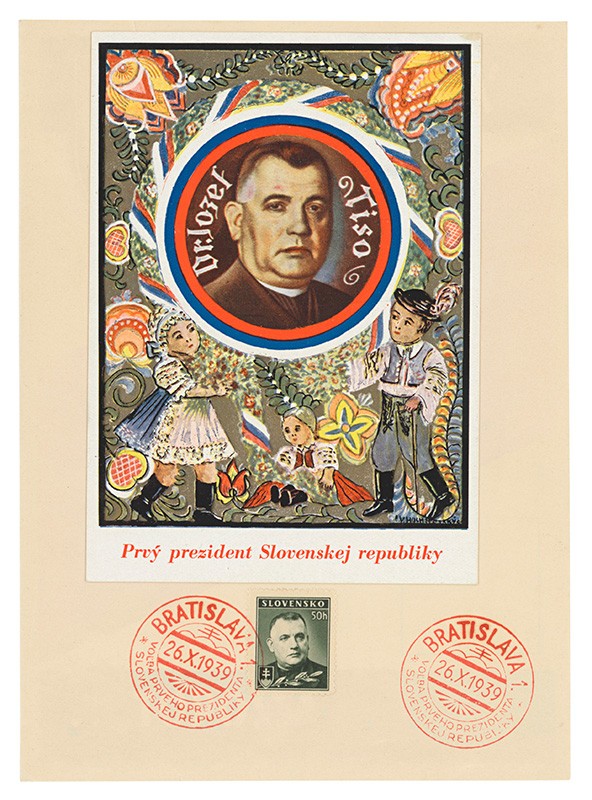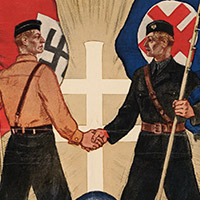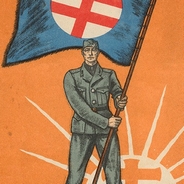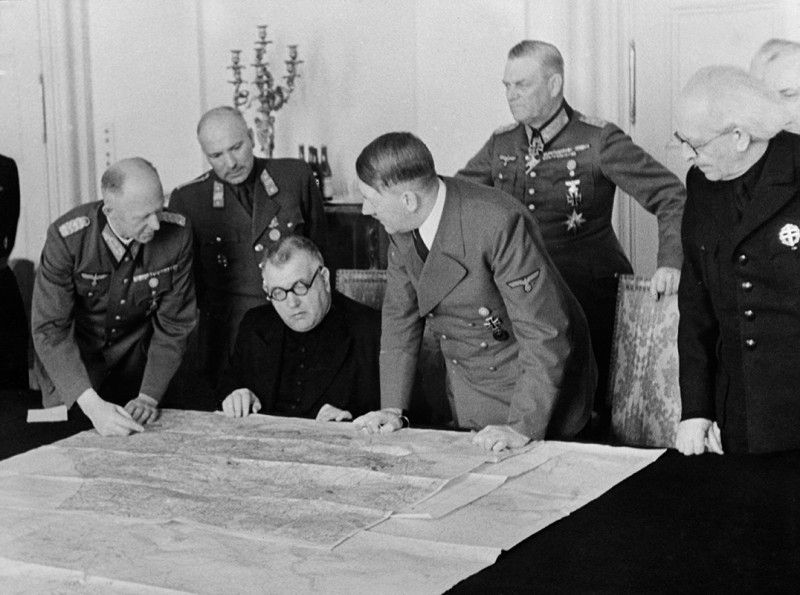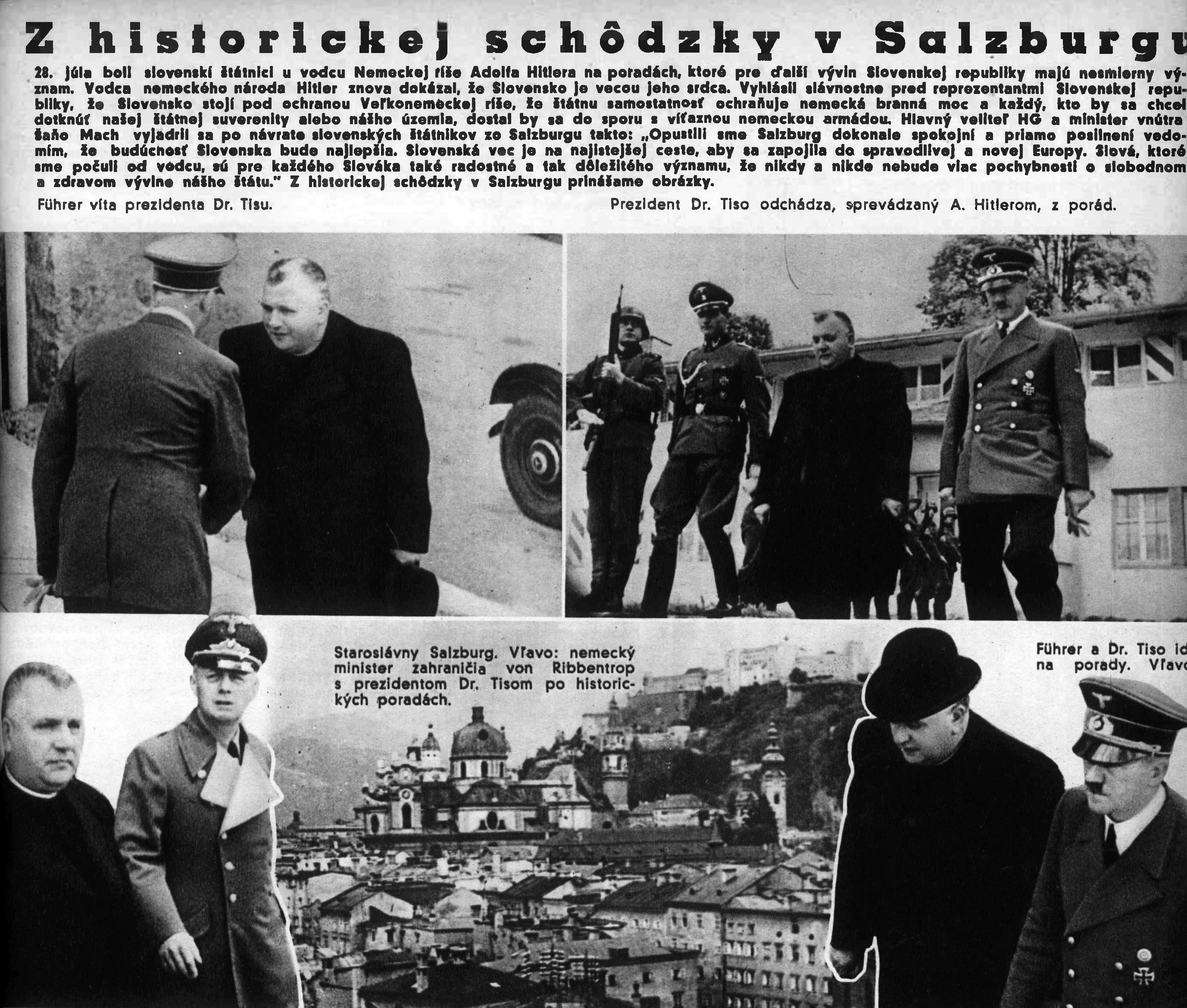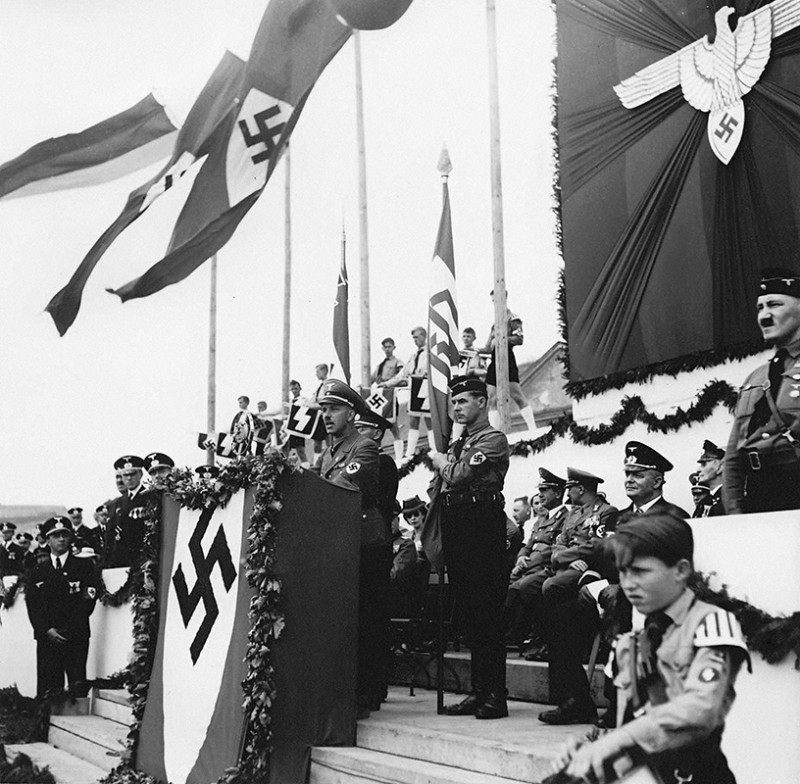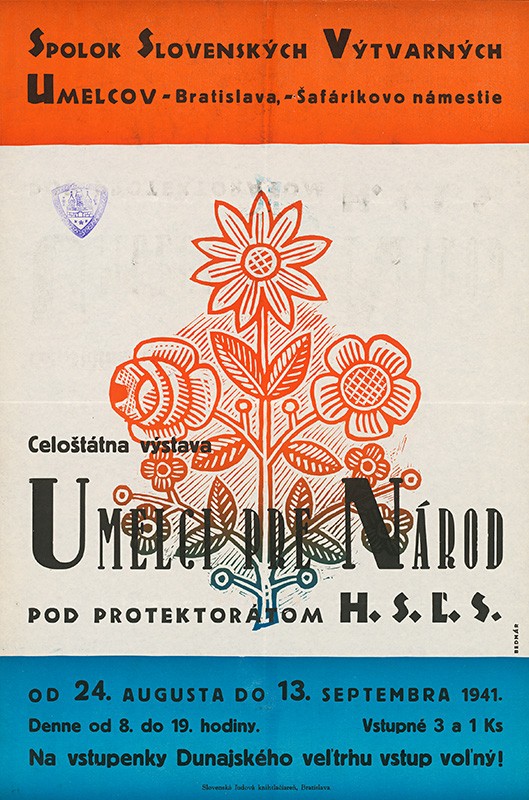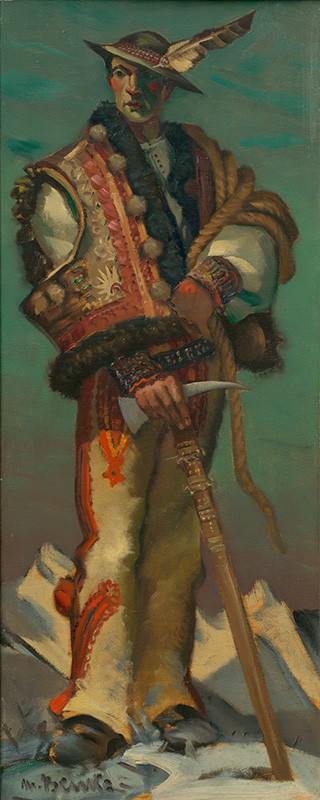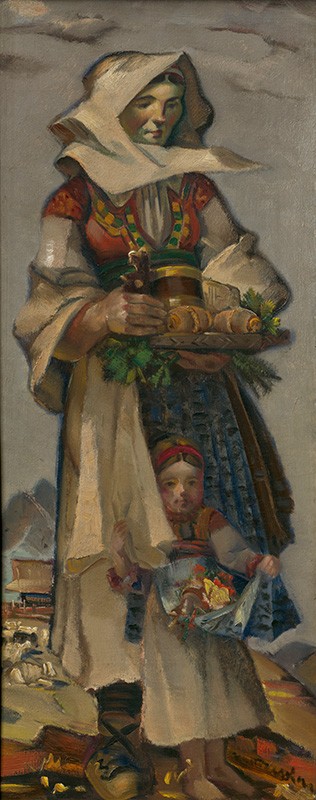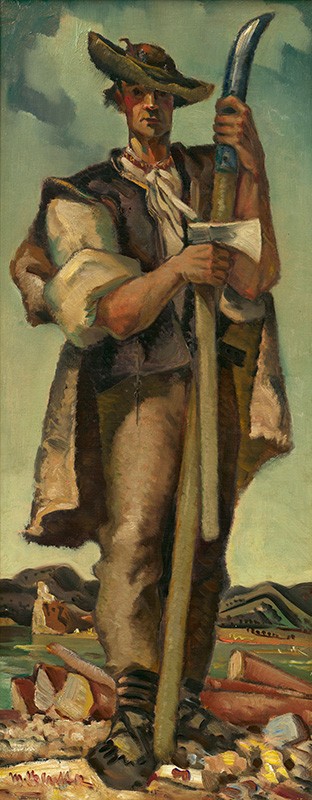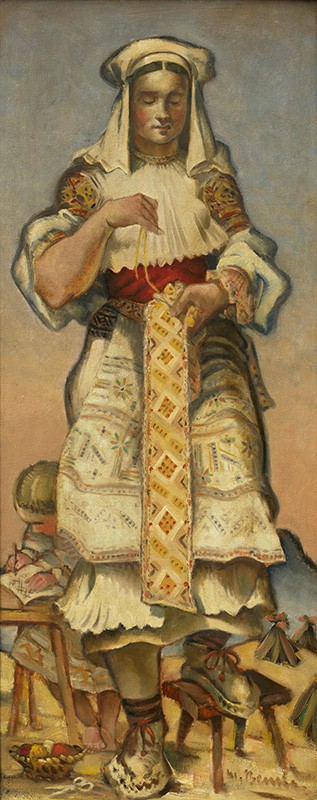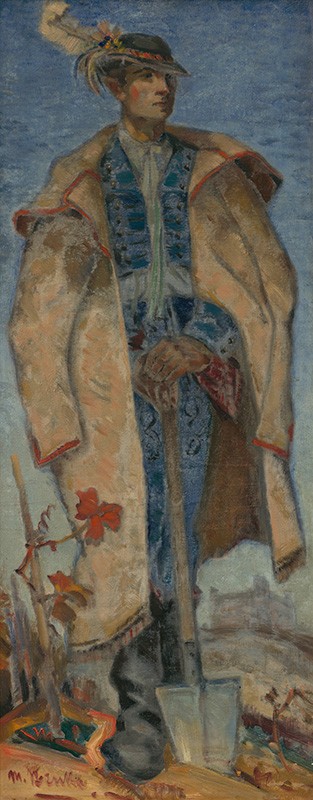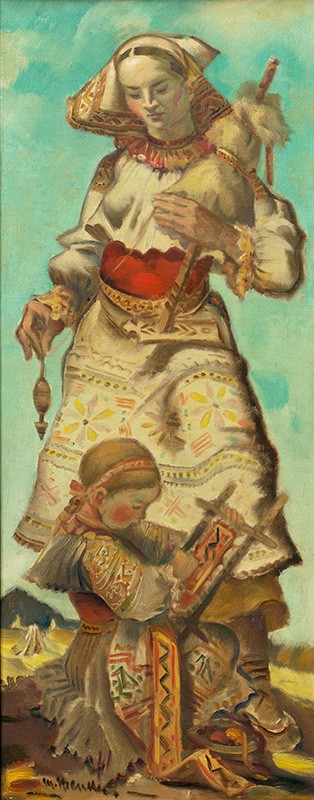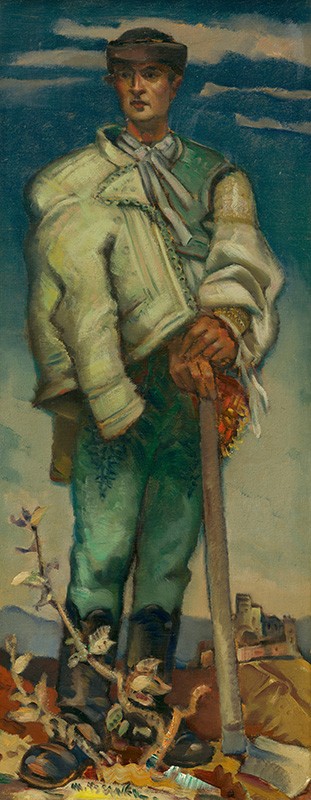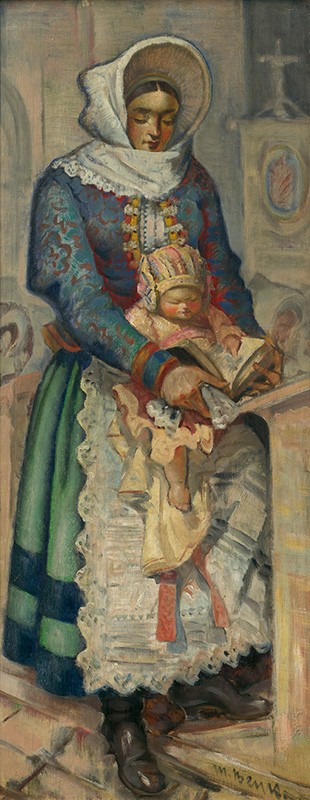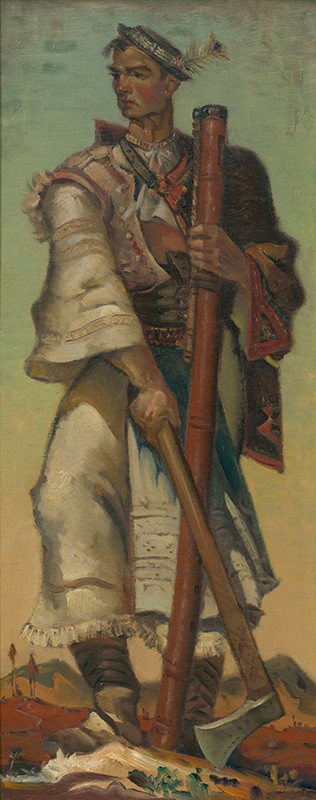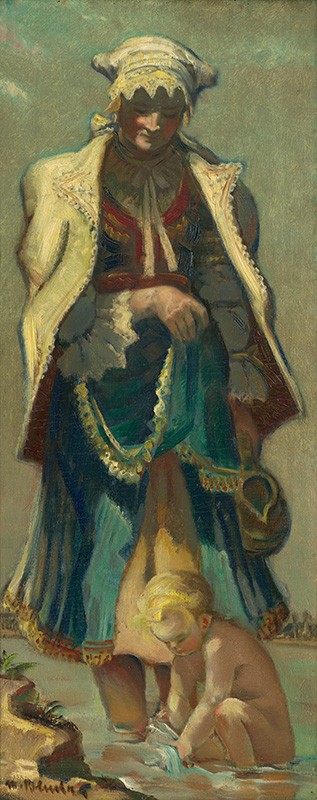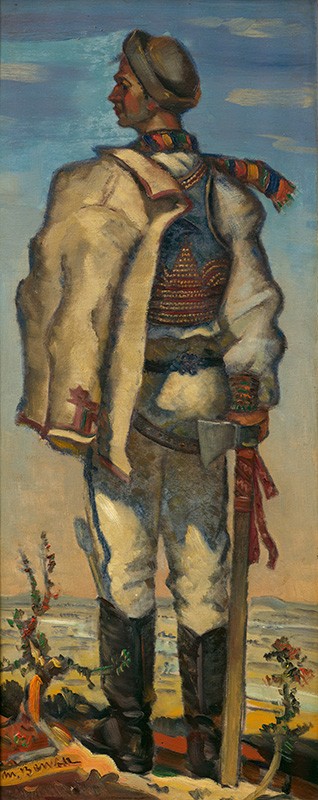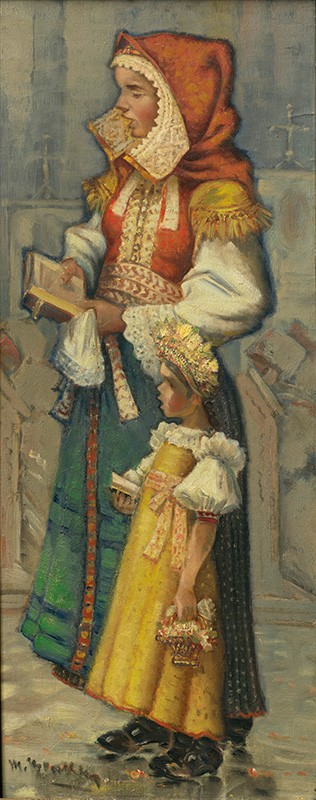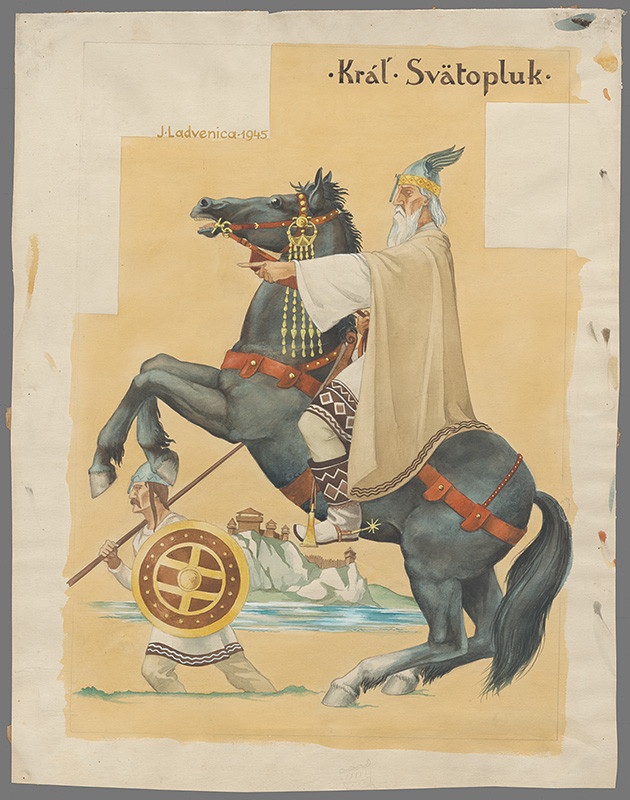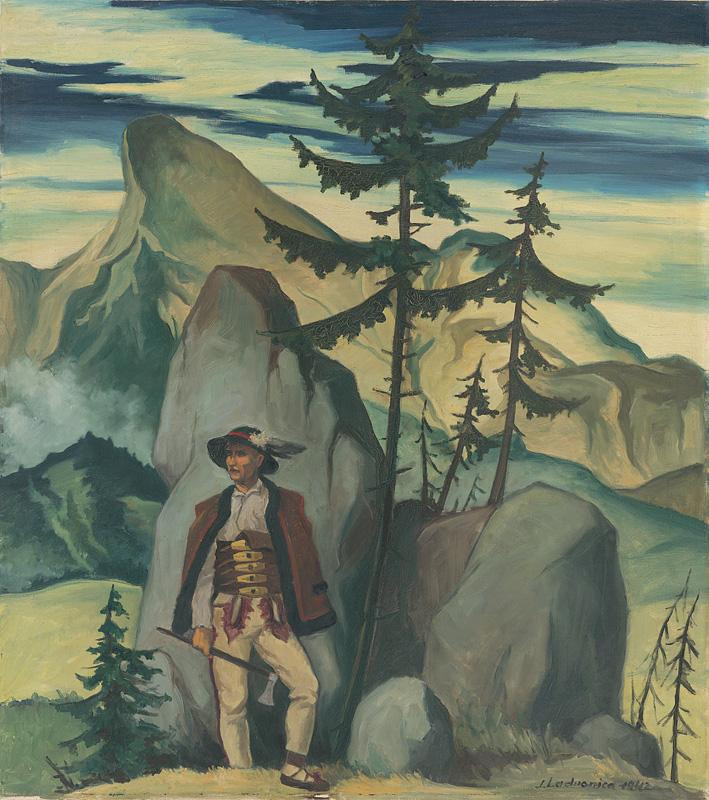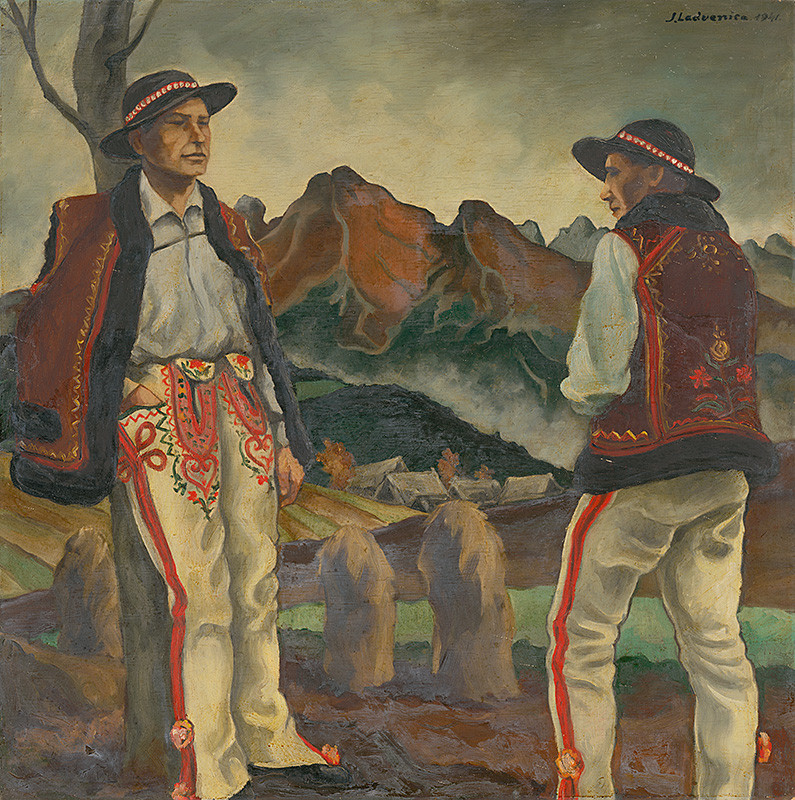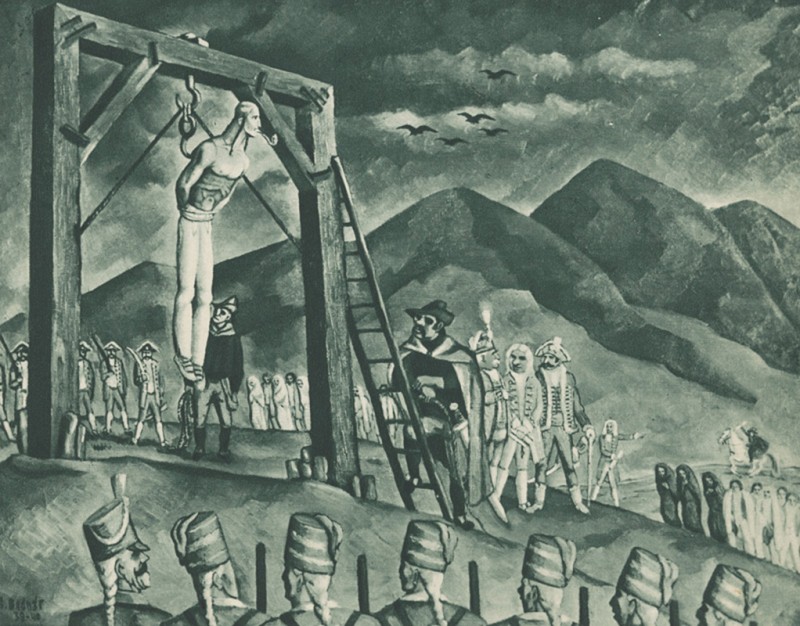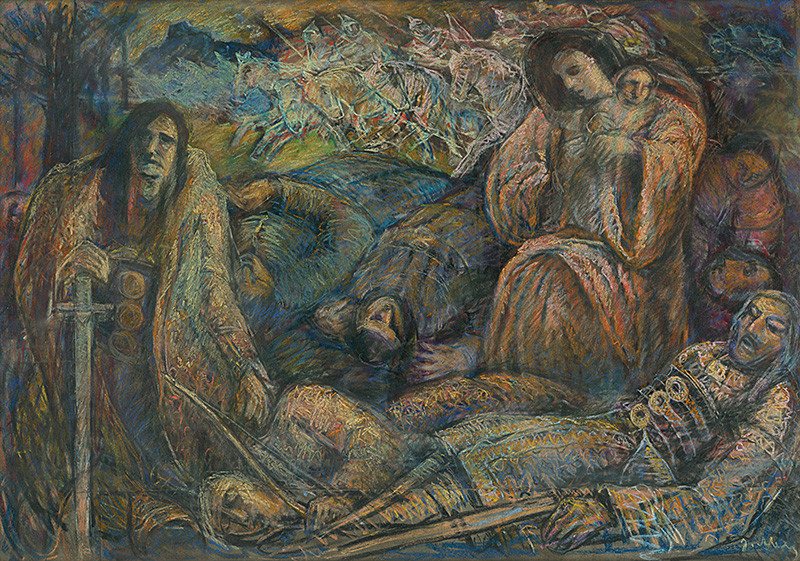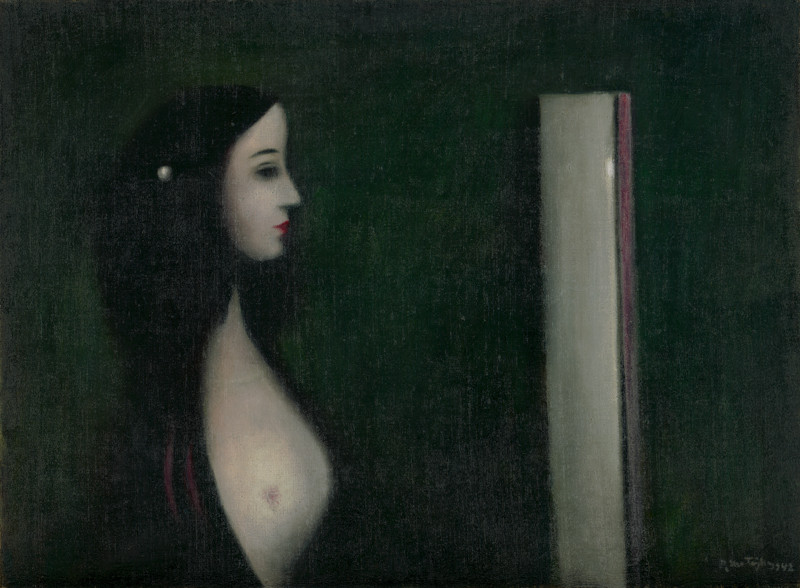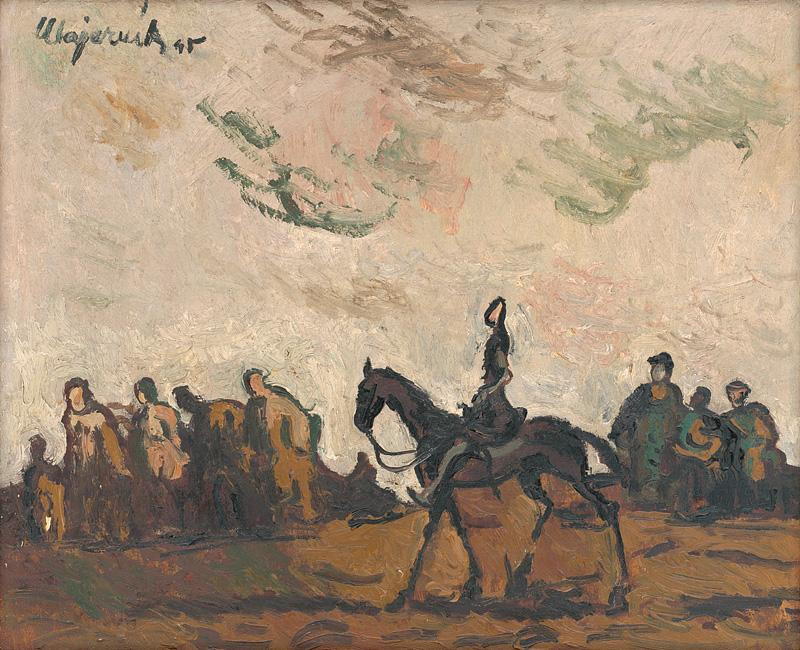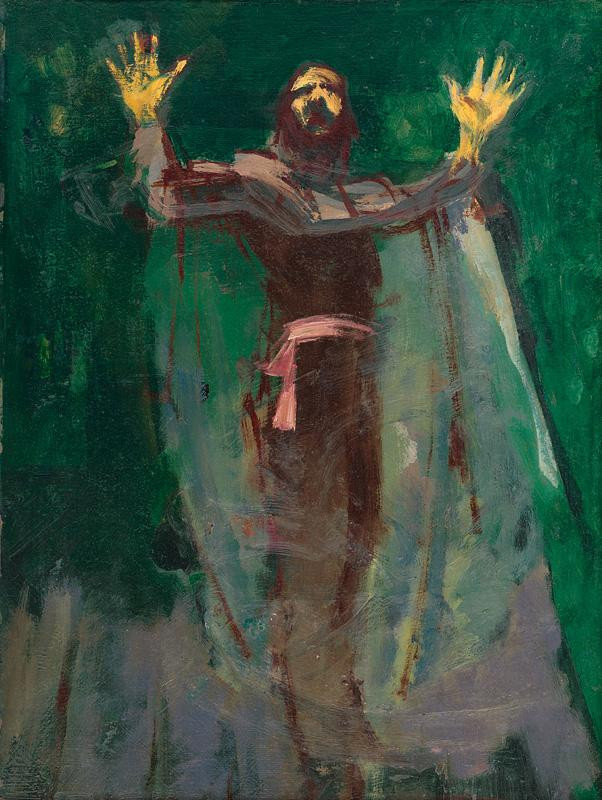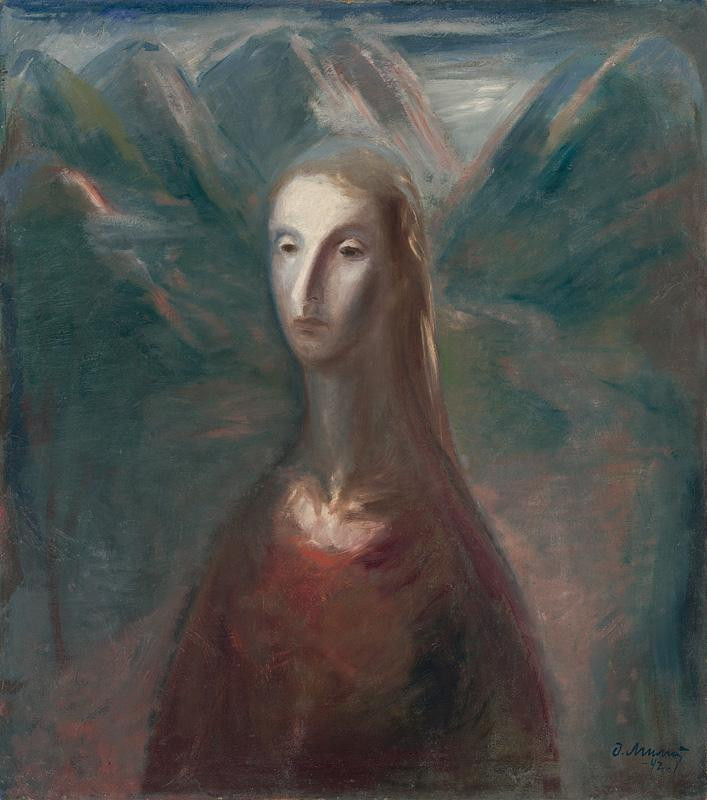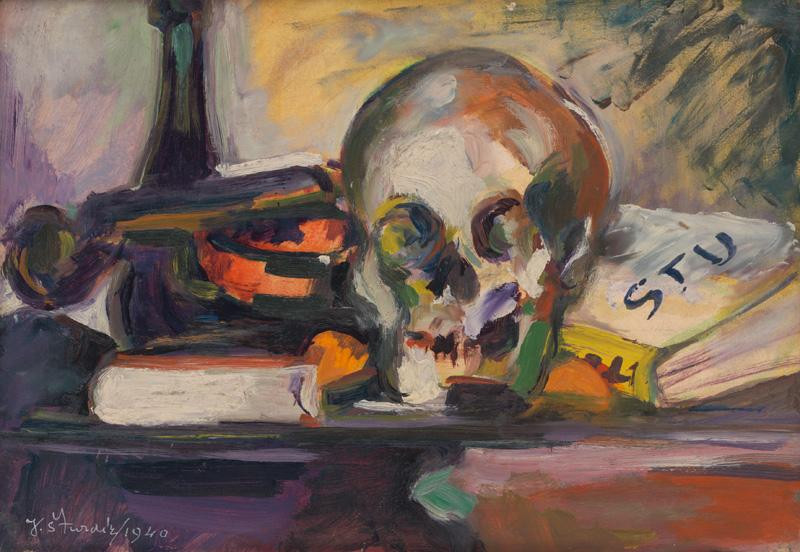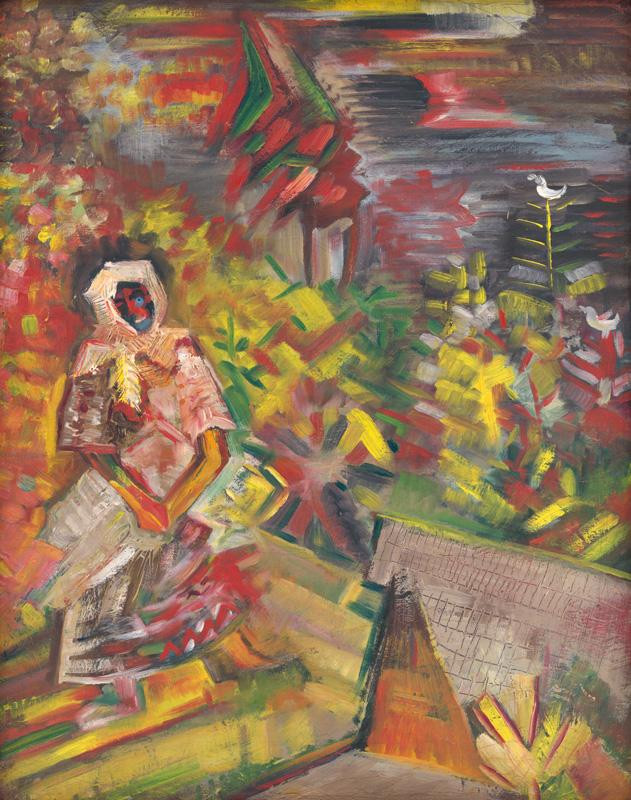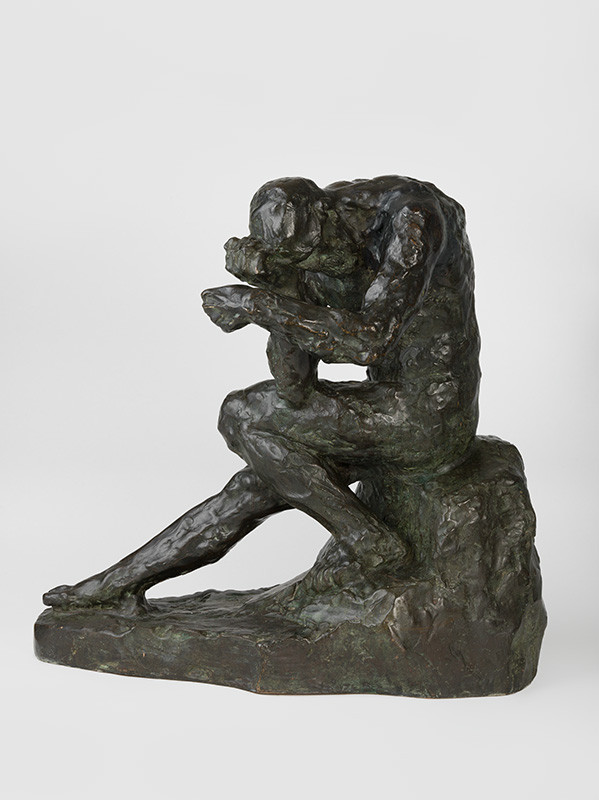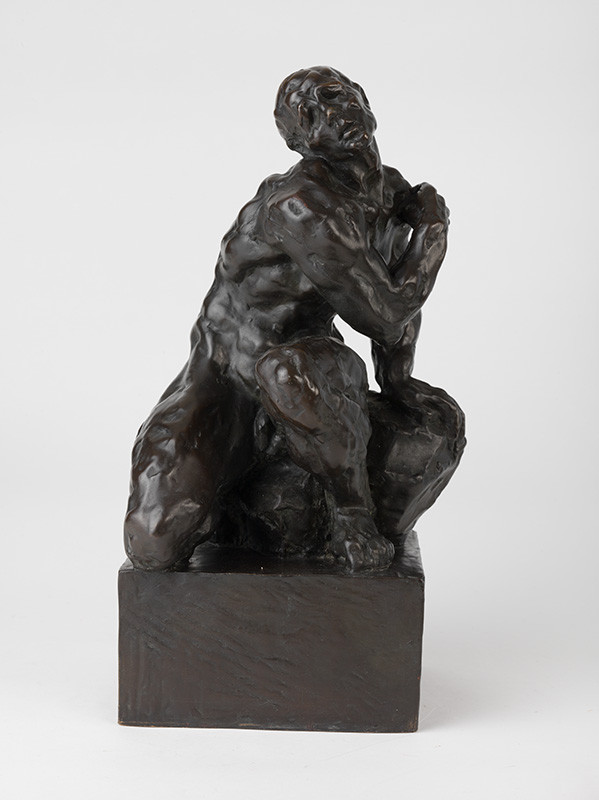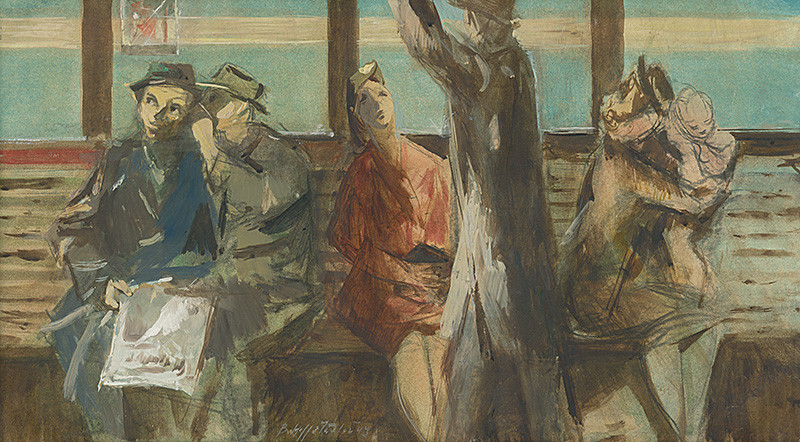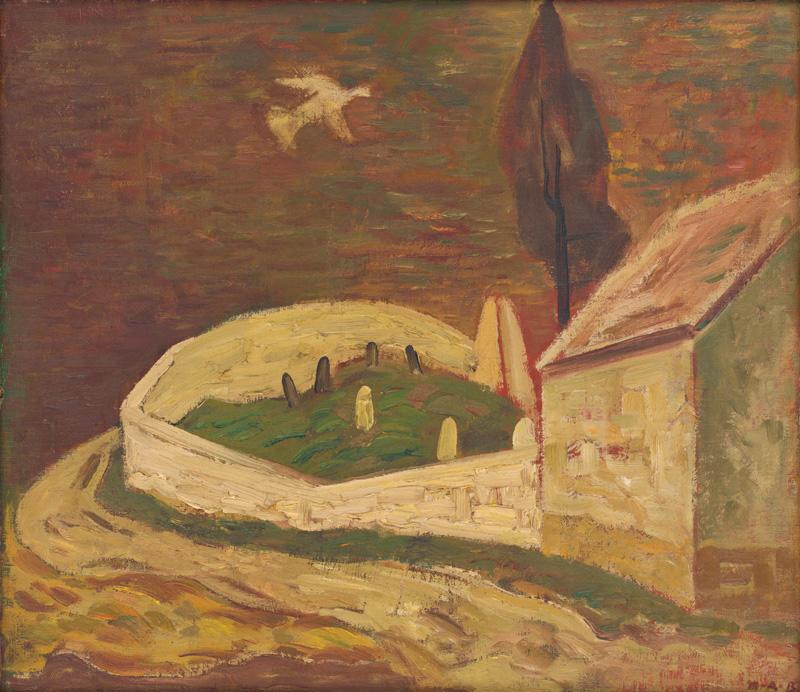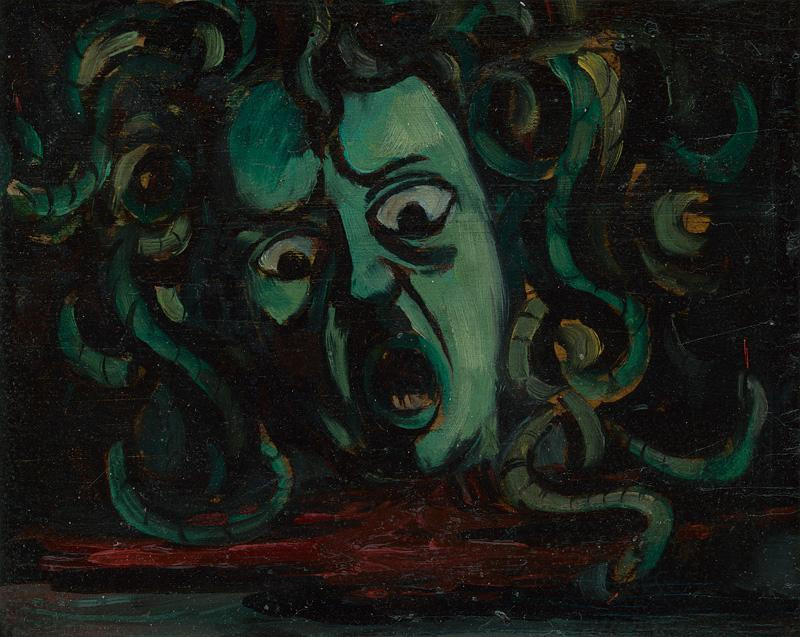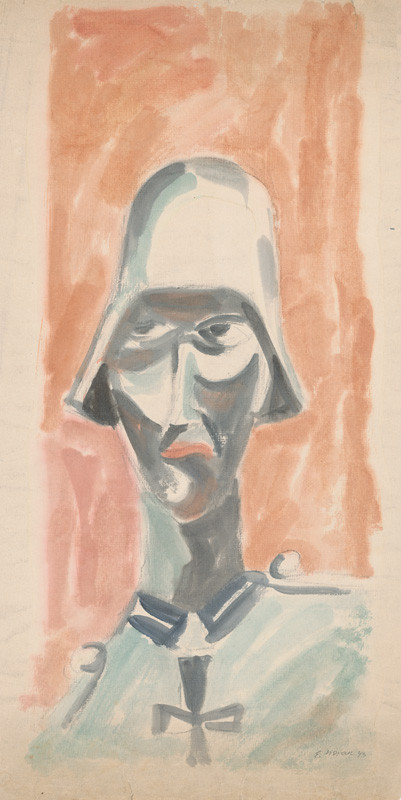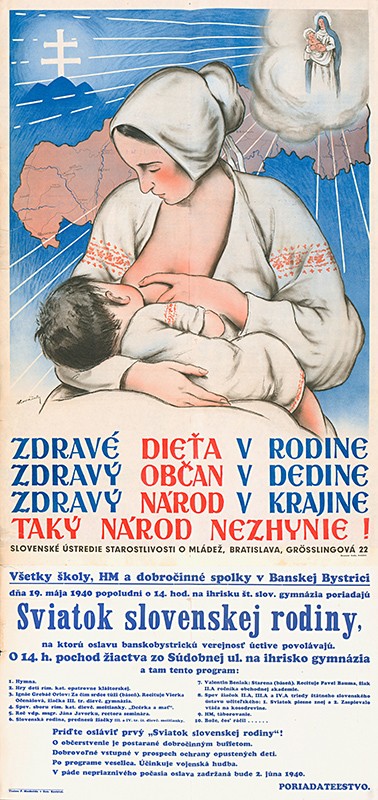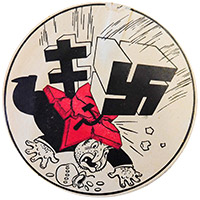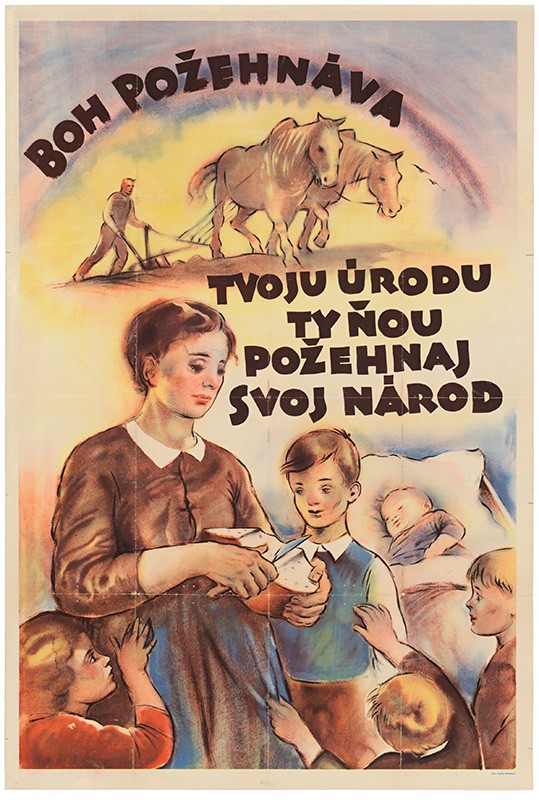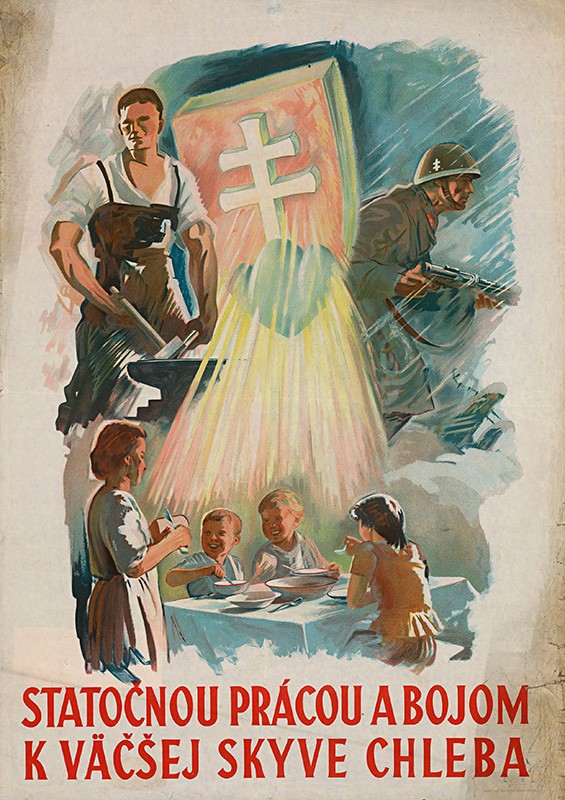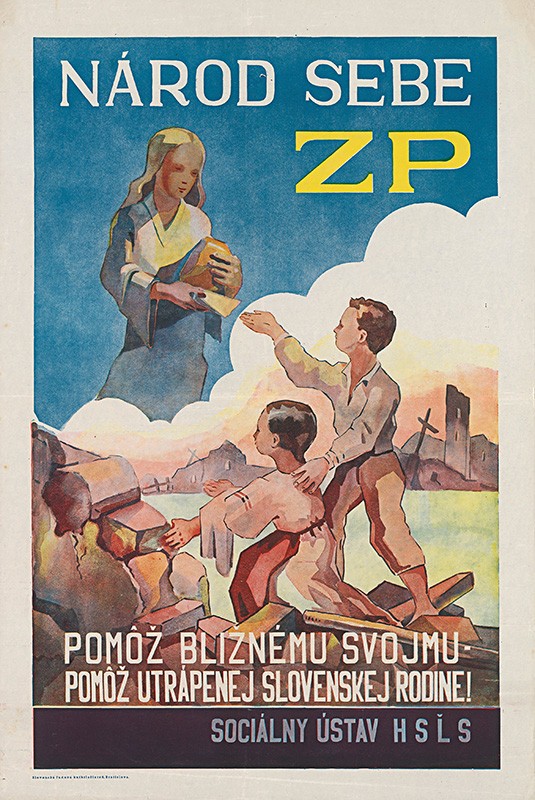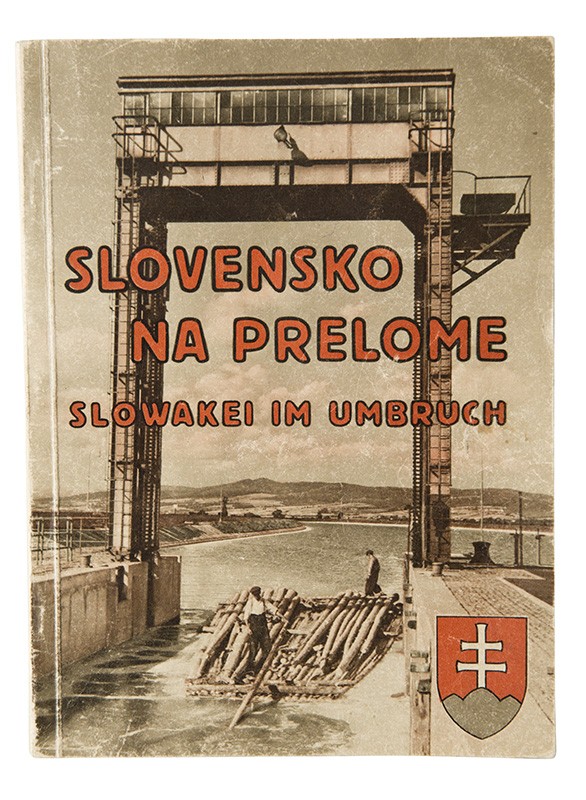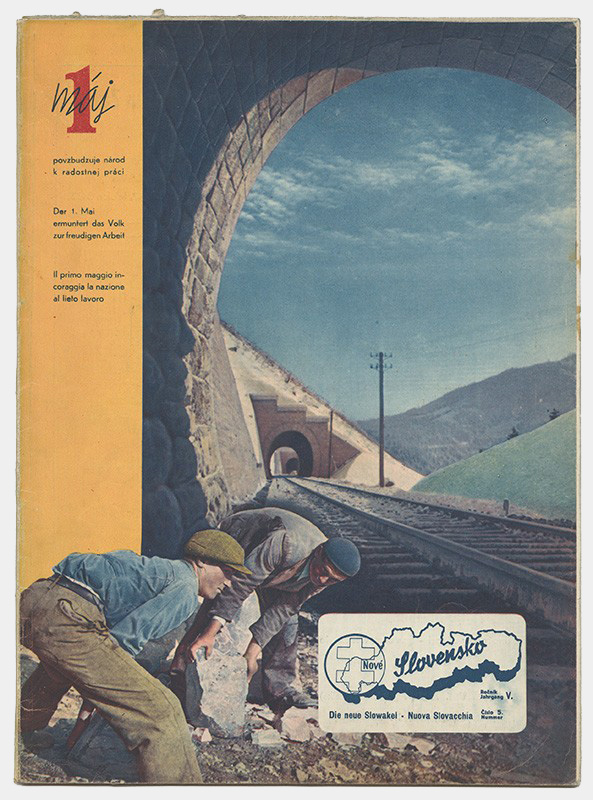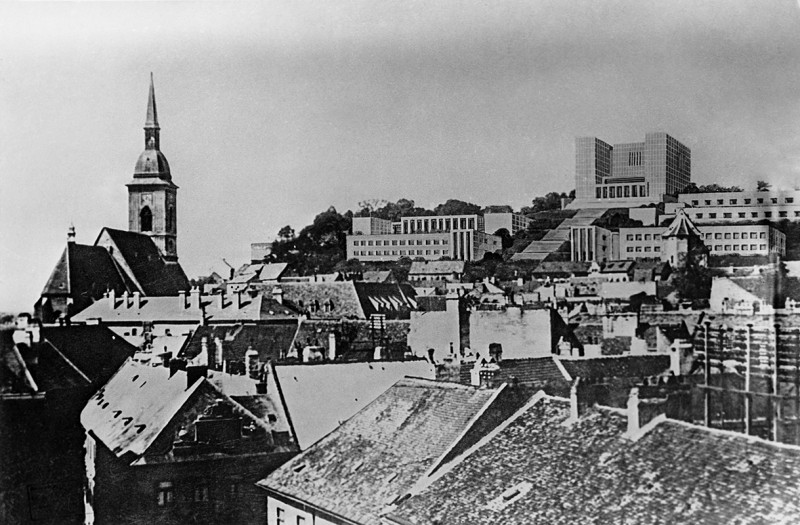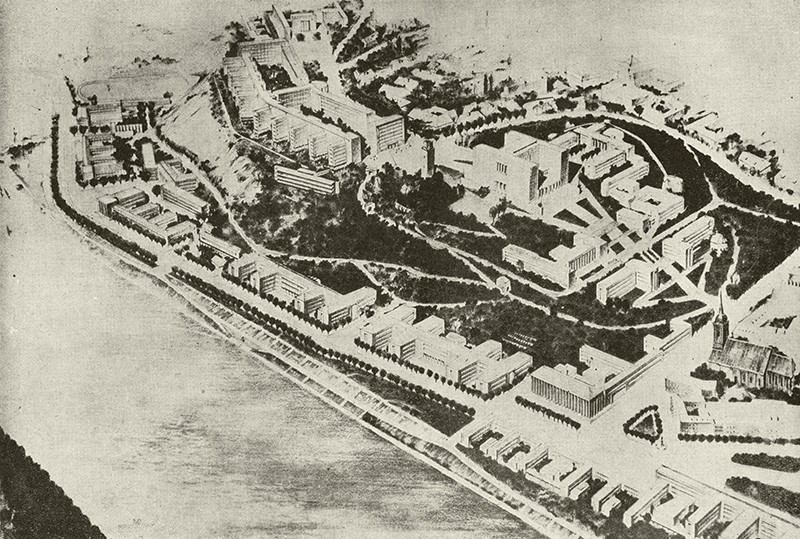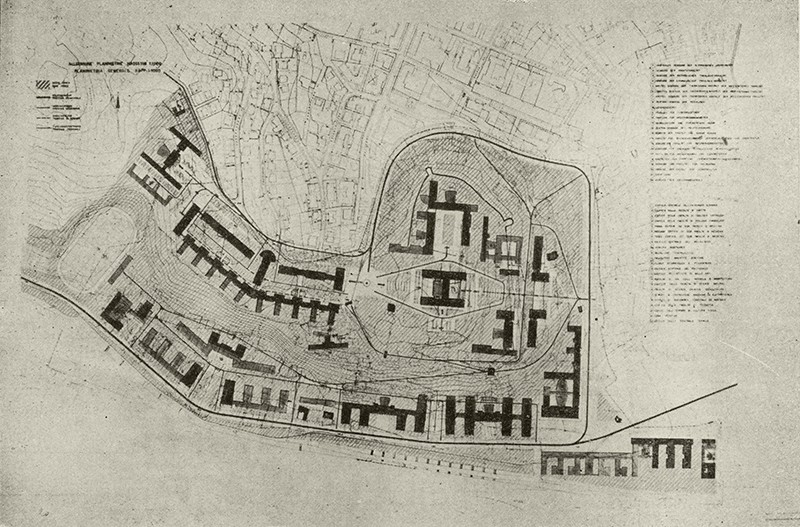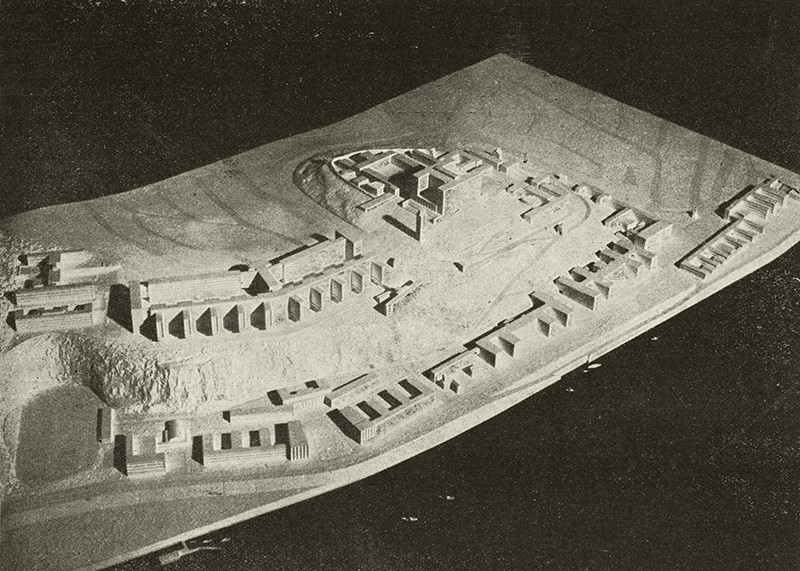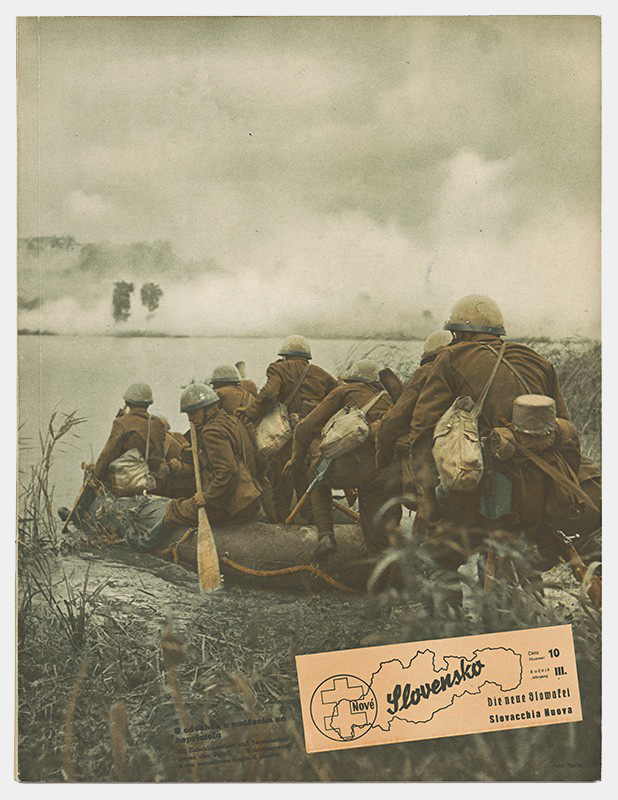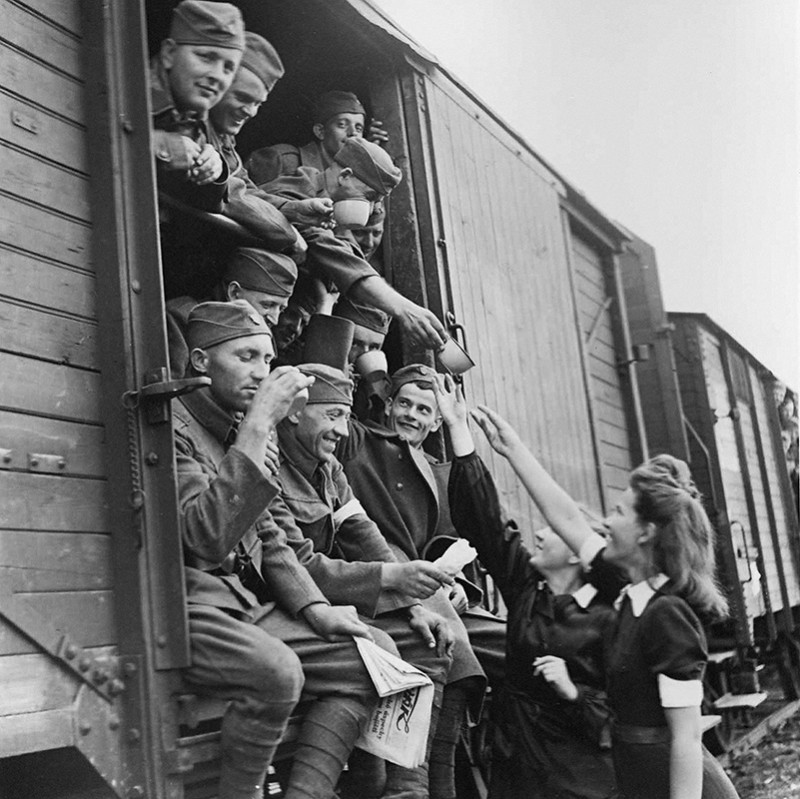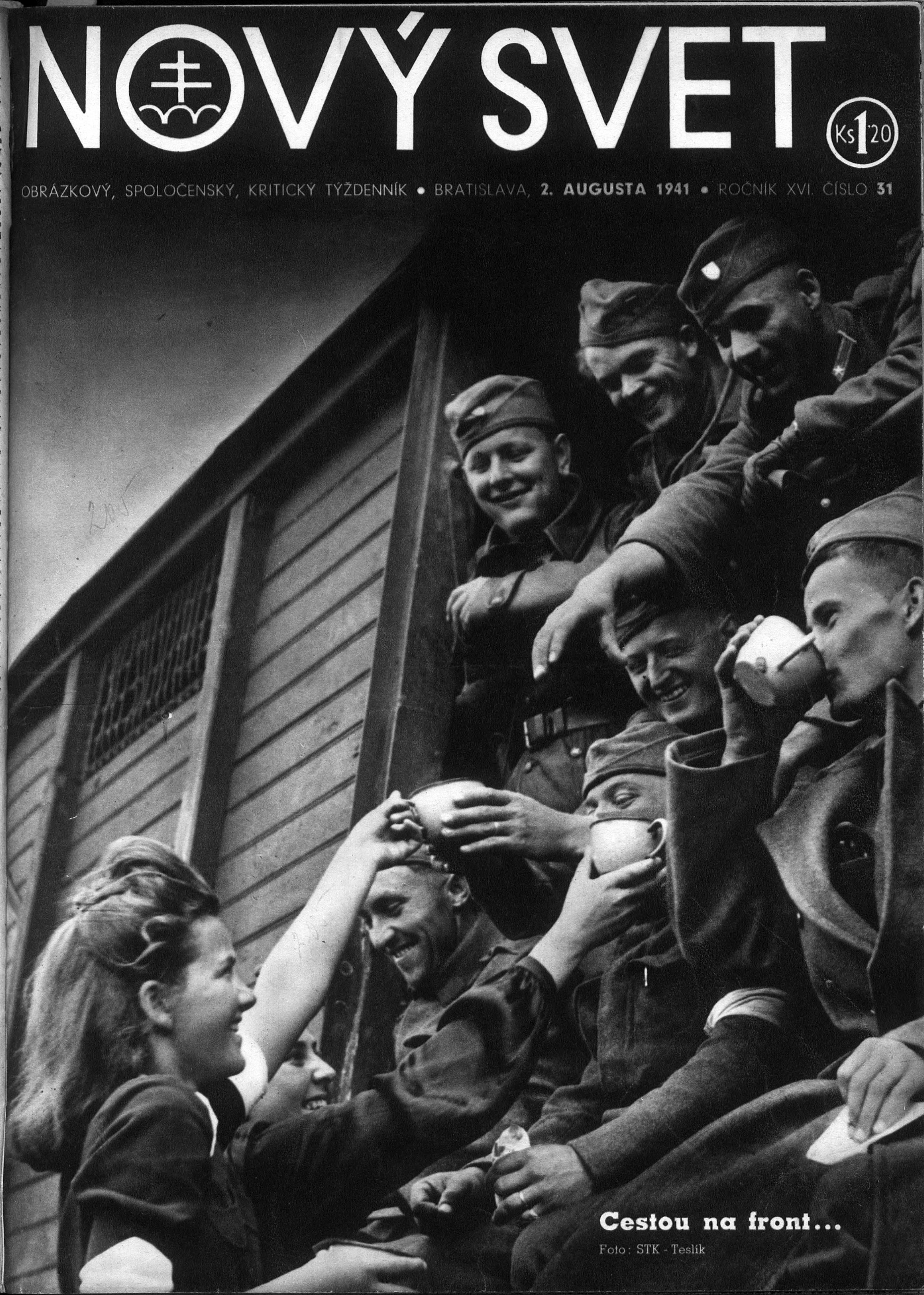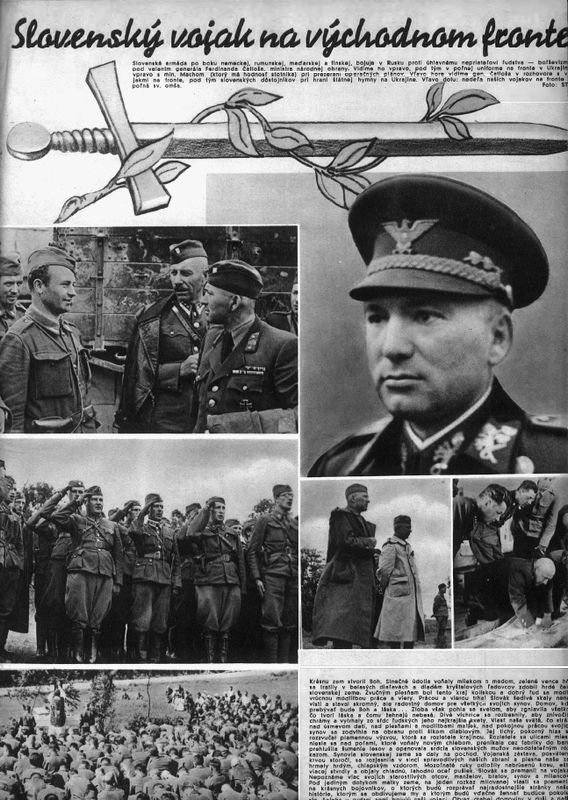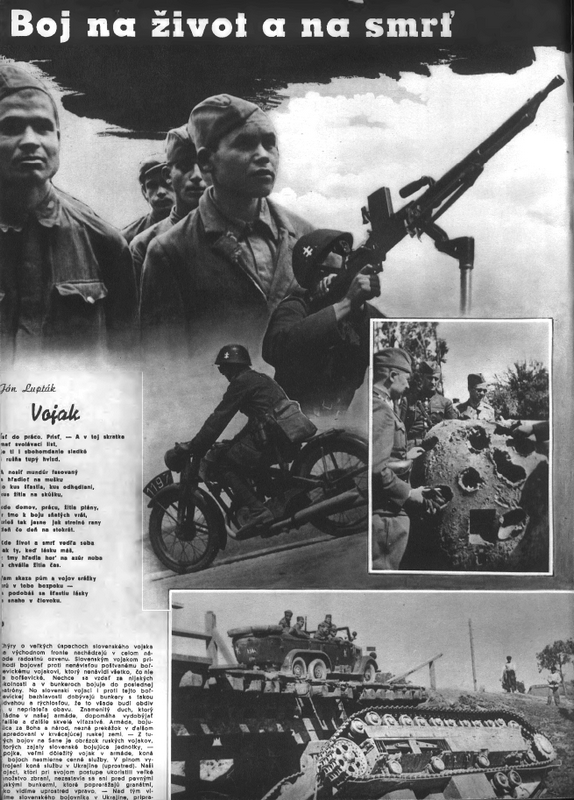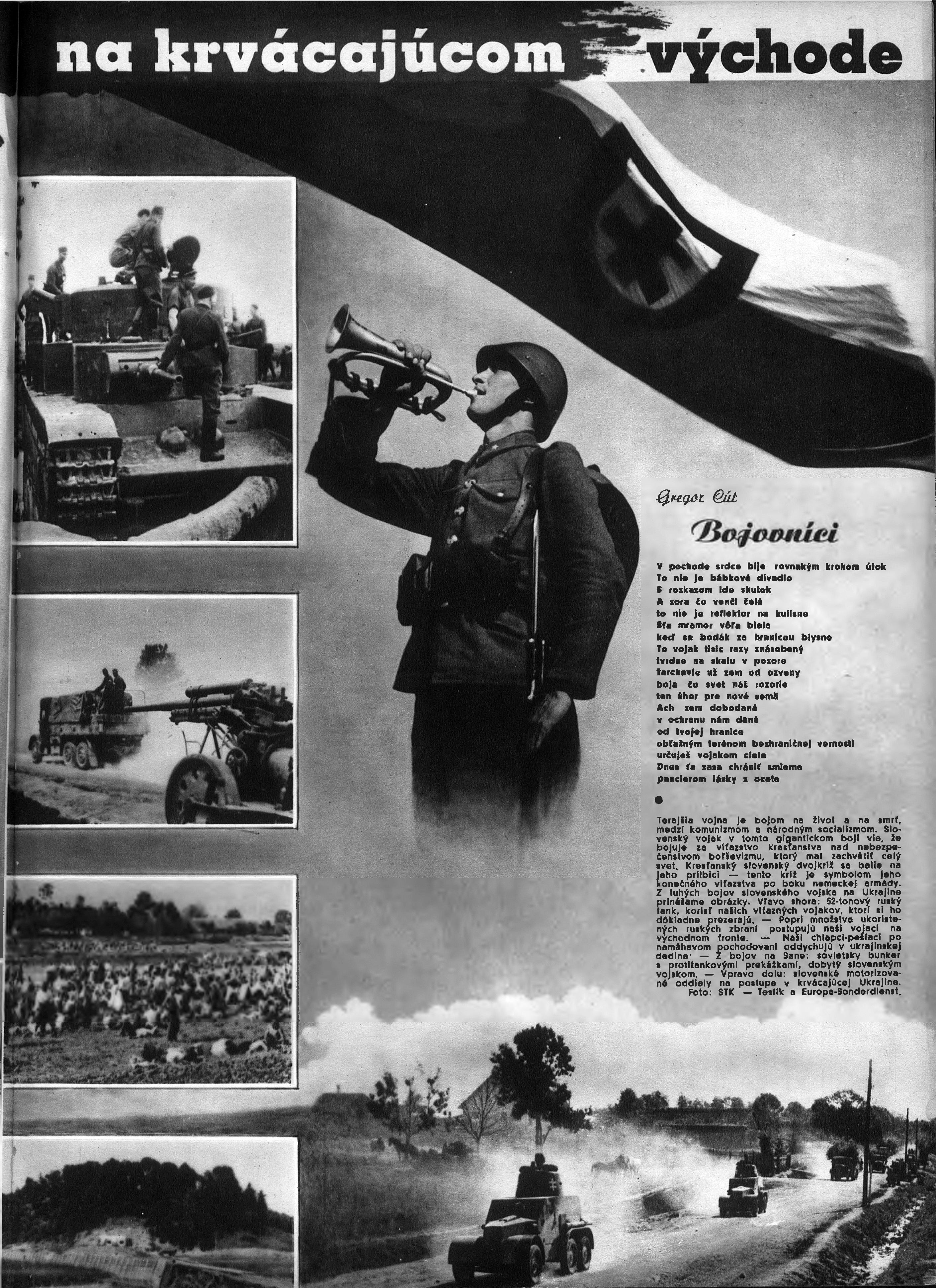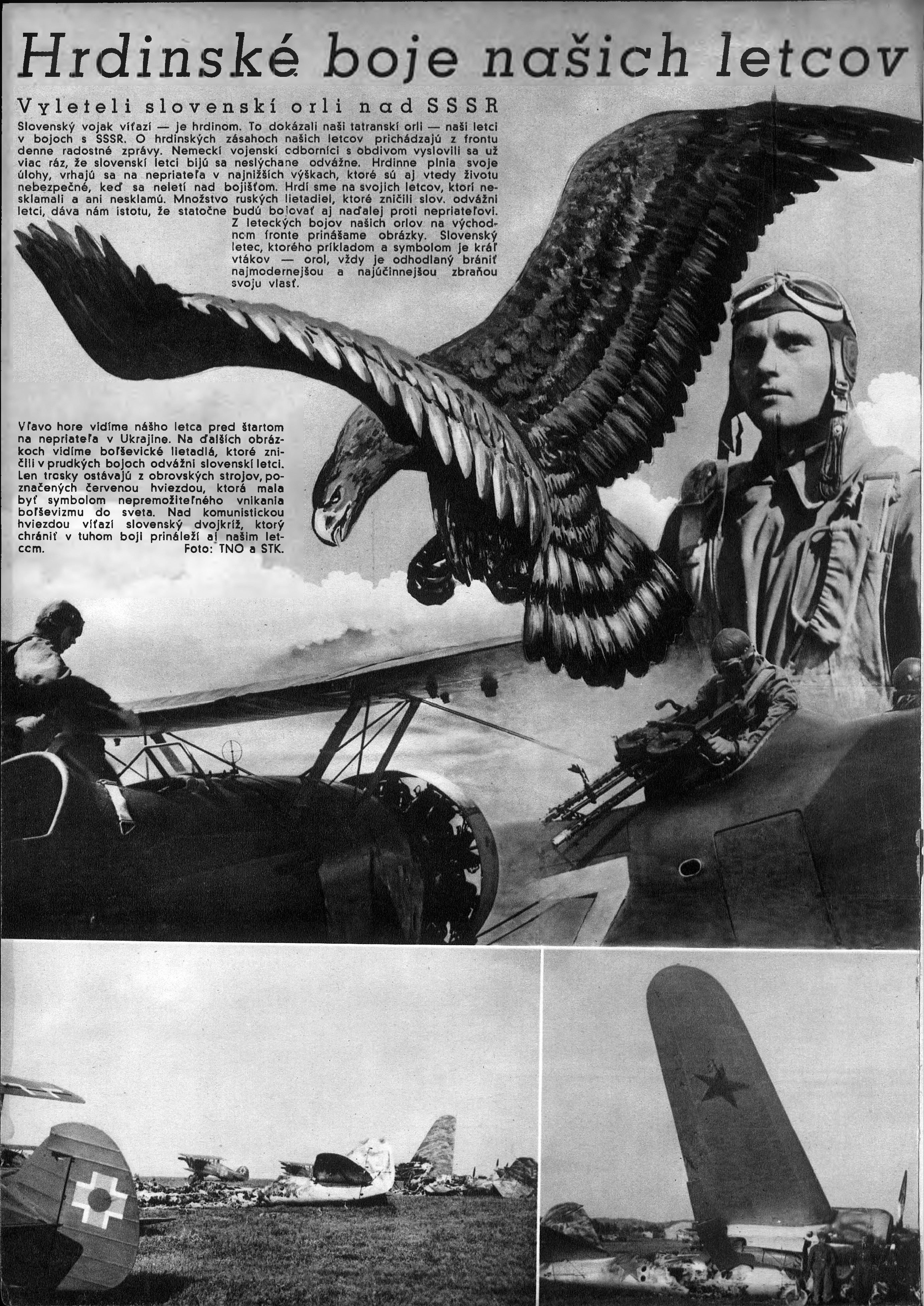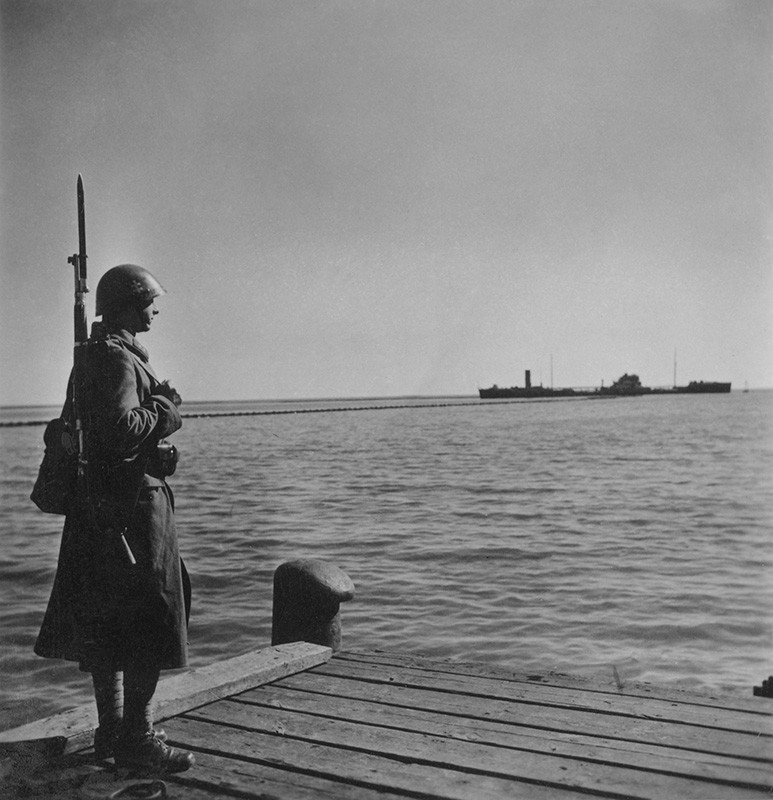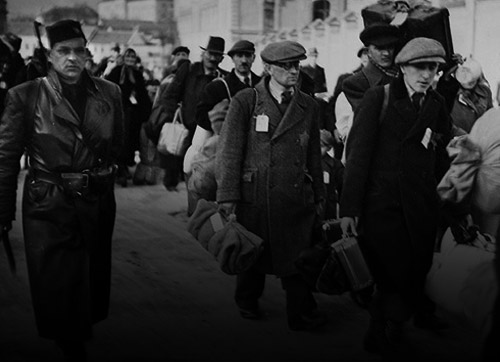One Nation, One Party, One Leader
The conditions under which the Slovak State was established, were a cause for concern for informed citizens. The populist propaganda, therefore, tried to justify the collaboration with Hitler and our compliance with his plans through widely publicised campaigns. They presented the founding of the independent republic as the culmination of "thousands of years of fighting for a Slovak statehood."
The Treaty of Protection
18. 3. 1939
The reality of Slovak "independence" was already clear in the Treaty of Protection (Schutzvertrag) that was signed by the representatives of the "Slovak State" with the Third Reich on 18 and 23 March 1939 in Vienna and Berlin. Nazi Germany pledged to protect the integrity of the Slovak territory in exchange for its subordination in the matters of foreign policy, building an army "in accordance with German forces" and aligning the economic policies with Germany, including agriculture, industry and infrastructure. Although the public was informed about the Treaty, the accompanying protocols remained secret. The Germans took direct control over the munition factories in Považie, creating the so-called “Schutzzone” or “protection zone”..
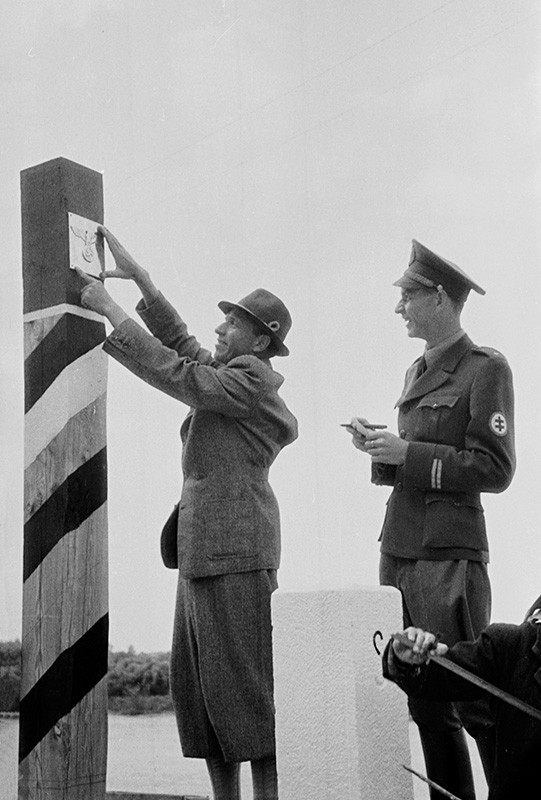 Adolf Hitler's disdain towards the Slavic nations was no secret. He considered them inferior, but favoured a more restrained approach towards Slovakia.
Adolf Hitler's disdain towards the Slavic nations was no secret. He considered them inferior, but favoured a more restrained approach towards Slovakia.
Slovakia was supposed to be an example for the Southeastern European region and prove that a nation can live peacefully under Hitler's "protection".
Adopting the Constitution of the Slovak Republic
21. 7. 1939
After the December elections, Hlinka's Slovak People's Party - Party of Slovak National Unity not only cemented its position as the ruling party by filling positions at the state and public administrations but also directly asserted their influence on economic and social life in the country. For example, they stopped local elections and instead instructed the municipalities to be run by appointed "government commissioners". The position of one party leadership was laid down in the constitution, ratified by the Diet on 21 June 1939. According to the preamble of the constitution, all power and authority comes from God, but the text continues by affirming the HSPP's authoritatian politics, which openly rejected the democratic principles that people were used to from the interwar period.
Slovakia became a one-party state where the HSPP claimed to be the only party that "represents the interests of the state-building nation" and the Slovak people could participate in the running of the state only "through them".
Only two other parties remained legal; both ethnic parties formally representing German and Hungarian minorities. The populist ideology put interests of the party, presented as the interests of "national unity", over individual interests. In this national unity, there was no space for those marked as 'the enemies of the state'. From Spring 1939, these individuals were sent to an internment camp in Ilava.
Learn more about the terminology
The start of the Second World War
1. 9. 1939
Back in April 1939, Hitler issued an order to develop a plan of military action against Poland, whose territory he wanted to annex to the German Reich. Slovakia was supposed to be one of the entry points into Poland for the German forces. In August, the government representatives promised Hitler that in case of a military conflict, the German forces would have authority over Slovak road, rail and river systems. The end of August also saw the beginning of the Slovak army mobilisation.
On 1 September 1939, the German forces entered the territory of Poland and the Second World War officially began. Slovakia, which was internationally perceived as a German satellite state, officially confirmed this position by their participation in the September Campaign. This meant an immediate severance of diplomatic relations with the Western powers.
The Slovak public was told that the reason for participating in the campaign, was the return of the territory of 770 km2 with 32 towns and villages, which was occupied by Poland after the Munich Agreement. France and Great Britain, as well as the Polish allies, declared war on Germany. Because of the changing political situation, the Allies returned to their official pre-Munich obligations towards Czechoslovakia. Slovakia was counted among the Nazi-occupied territories.
Jozef Tiso Elected for President
26. 10. 1939
The Constitution from July 1939 granted extensive powers to the president, who was not yet appointed when the constitution was adopted. The president would be elected for seven years, would not be responsible to the government or parliament and could be prosecuted only by the State Council and only on charges of treason. He would be the commander in chief, the commander of the Hlinka Guard and he would appoint ministers, professors and judges. He would have the right to attend legislative and State Council sessions, declare a state of emergency and, with an agreement of the Diet, declare war or peace.
On 26 October 1939, Jozef Tiso was elected President of the Slovak Republic. Vojtech Tuka took over his former position as Prime Minister.
Images of Jozef Tiso with the title of First President of the Slovak Republic
Learn more about the terminology
The Salzburg Negotiations
27. - 28. 7. 1940
The independent Slovak State was created as a by-product of promoting German interests in Central Europe and by signing the Treaty of Protection, Slovakia undeniably became a satellite of the Third Reich. The hopes of Slovak Minister of Foreign Affairs (and Minister of Interior) Ferdinand Ďurčanský for independent foreign policies turned out to be utterly naïve. Nazi Germany saw his occasional attempts at promoting his own ideas as a treachery of the interests of the Reich.
At the end of July 1940, after several warnings, Hitler summoned President Tiso to Salzburg, to show the Slovak people the limits of their independence. In Salzburg, the Germans insisted on removing Ferdinand Ďurčanský from all posts and dictated further changes in the Slovak government. The post of the Minister of Foreign Affairs was passed to Vojtech Tuka, a staunch supporter of National Socialism in Slovakia. Tuka was supposed to guarantee that there would be no more deviation from foreign policies of Germany. Alexander Mach, another populist radical, became the Minister of Interior.
It was the Nazi vision for Slovakia to adopt the ideas and methods of National Socialism.
The key positions in the ministries and in the government were increasingly occupied by German advisors after the meeting in Salzburg. Their task was to control the operations of these institutions and monitor the loyalty towards Germany and their compliance with the obligations of the Treaty of Protection.
Lomnica Manifesto
31. 8. 1940
Even the art scene felt the consequences of the political changes in Slovakia. In October 1939, the progressive School of Arts and Crafts was closed and supposedly replaced by the Department of Drawing and Painting at the Slovak University of Technology in Bratislava, which was not academically oriented but rather concentrated on educating art teachers. All interwar art societies were replaced by the united Society of Slovak Artists.
After the Salzburg Negotiations, a strong national socialist ideology was promoted in the Slovak arts, and this became the topic of the conference at Tatranská Lomnica. Slovak National Socialism was supposed to be actively promoted in the public life, the opinion of participants, as well as in culture and education.
The program of building the National Socialist culture was characterised by the return to the so-called Slovak "peculiarity"; folk motifs, strengthening a national character of Slovak art and the illusion of fulfilled age old efforts for independence.
Martin Benka - Cycle of the Guardians of Slovakia (1940 - 1942)
The pseudo-Romantic, idealist interpretation of the national myth was based on the idea of a return to our ancestors and the selective creation of heroic martyrs from the past (Pribina, Svätopluk, Old Slavic and Constantine-Methodist traditions). It emphasised the antiquity of the nation, born of "ancient spirit of the people" and their unchanging lifestyle.
Artworks depicting the icons of national unity and Slovak "peculiarity"
Because the official ideas about the arts under the new regime were unclear and contradictory, original artistic initiatives sometimes slipped through the net „leaky totalitarianism“. The younger generation of artists managed to articulate anti-clerical, antifascist and anti-war ideas. The publication of several surrealist anthologies became the platform for new scientific, literary and artistic opinions: Yes and No (1938), Dream and Realist (1940), Day and Night (1941) and Greeting (1942). It was a meeting point for the artistic opinions of several members of the Generation 1909: (C. Majerník, J. Mudroch, P. Matejka, J. Kostka, E. Nevan, J. Želibský, B. Hoffstädter a i.), but also of younger artists, later called the Generation of the Second World War (V. Hložník, L. Guderna, V. Chmel, E. Semian, O. Dubay, E. Zmeták).
The works of these artists were often characterised by poetic inventiveness and imagination, fragmented nature, allegorical suggestions of "unspoken content" and motifs, which allowed "the artwork to feel as a mark of reality", "an inverted symbol of the era". Non-conformist attitude towards the official requests was shown also by artists that kept the continuity of Modernism as M. A. Bazovský, or A. P. Weisz-Kubínčan, whose Jewish heritage lead to his continual persecution with a tragic ending.
Examples of Unofficial Art Works
Life in the „New Slovakia“
The propaganda at the time was used to spread an image of Slovakia as a peaceful and prosperous country. In contrast to the Protectorate or even Poland, Slovakia was, at least at the beginning, less directly impacted by the Third Reich and the war. Until the Salzburg Negotiations, the government managed to paint a picture of "independence", which allowed them to retain their popularity. The government was adopting social rhetoric and financed various projects. They also introduced some social benefits, such as allowances for children without means.
War production, mobilisation, and relocation of workers to Germany brought down unemployment. Large parts of the population benefited - or at least hoped to benefit, from Aryanization, ranging from seizing Jewish businesses to taking equipment from their households.
With the escalation of the military conflict, the economy started showing negative effects of the crisis. From 1940 and especially since the declaration of war with the Soviet Union in June 1941, supplies rapidly diminished. The summer of 1941 saw a major flour supply crisis. The lack of fats started to become a serious problem and the black market prices were several times higher than the state-controlled market. To avoid the unpopular ticket system of rationing, the government started so-called issue books.
In the annexation of the southern regions to Hungary, Slovakia lost an agriculturally important territory with several centres of the mining, leather and printing industry. The transportation and communication infrastructures were disturbed, as well as the electricity network. In order to improve the situation, in February 1939, the government announced a loan for the economic recovery of Slovakia.
For Germany, Slovakia was an important source of raw materials, agricultural products and strategic defence industry. Germans also continually used the Slovak transportation networks and infrastructure. They had vested interest in further Slovak development. The Slovak government invested into various interwar projects and presented them as their own. They continued building new roads, railways, electrical and telephone networks - all of which was used in weekly newsreels to substantiate the righteousness of the new path. The dark side of the economic upswing was covered up through propaganda campaigns such as "Smiling Slovakia" or "Joy of Work".
Key positions in Slovak corporations were occupied by German banks and associations and a considerable part of the industry was directly tied to German war needs. Hitler's defeat would render Slovak economy unsustainable.
Attilio and Ernesto La Paluda - Design for University Campus in Bratislava (1940-1941):
The Beginning of the German-Soviet War
22. 6. 1941
Germany depended on the forces of their allies when they attacked the Union of Soviet Socialist Republics (USSR). In late April 1941, they signed an agreement about transit and residence of German troops on Slovak territory and in the early June, the Slovak army introduced special exercises.
On 22 June 1941, German, Romanian and Finnish forces attacked the Soviet territories. The inclusion of Slovakia as a Slavic state was supposed to strengthen the impression that it was a "fight against Bolshevism", not a war on the civilian population. The real reason for the invasion was German plans to acquire "living space" ("lebensraum") and germanise the Eastern Europe.
The leading Slovak politicians agreed with Hitler's demands that the Slovak forces participate in the military operations.
With their willingness to fight by the side of the Third Reich, Slovakia was competing with Hungary for German's favour in hopes for revision of the Vienna Arbitration. Tuka announced the end of diplomatic relations with the USSR followed by a declaration of war. However, the Slovak Diet never discussed said declaration of war.
Excerpts from the New World Magazine (August 1941) about the Slovaks on the Eastern Front
Transportation by the German and Slovak armies overloaded the road and rail networks to the extent that civil traffic, especially trains, were often greatly impacted. The Slovak army formed 'Rapid Deployment Forces' (later 'Rapid Brigade') and crossed the Dukla Pass on 24 June to join the German army.
From this moment, the Second World War would increasingly bring losses to Slovakia...
All artworks in this chapter can also be found in the collection at the Web of Art: One Nation, One Party, One Leader
